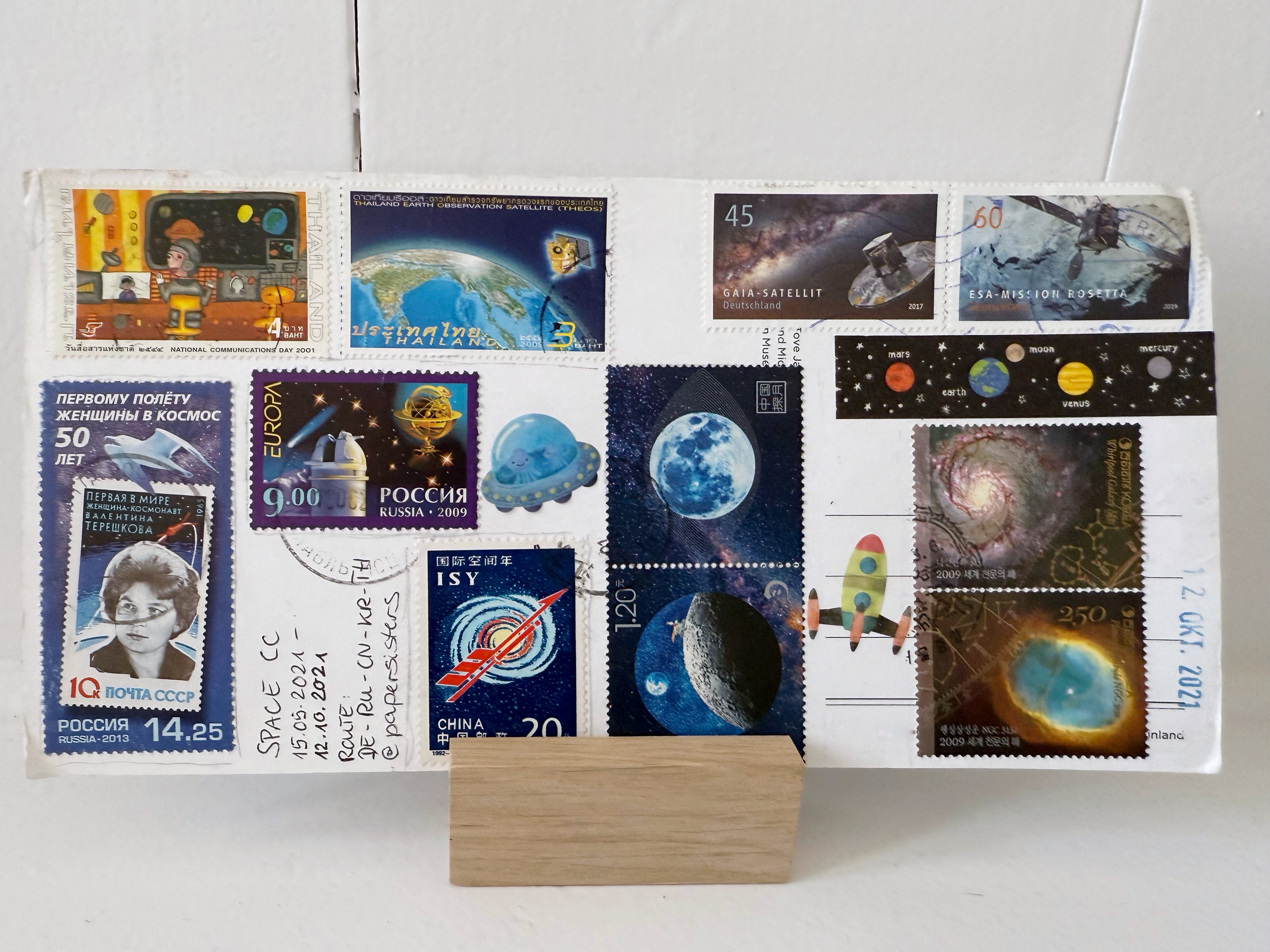
Chaincards - Postcards travel around the world and become treasures

Have you ever heard of chain cards? When we first came across the term a few years ago and saw a postcard with lots of stamps from different countries, we were immediately fascinated. But how is a chain card like this created? It took us quite a while to understand how chain cards work, at least in terms of the basic principle. At the time, we would have liked a description of how the story works. We then learned step by step over several years.
Whenever we've posted something about chain cards on social media in the past, we've always received lots of curious and interested questions. So we are now using our blog to compile what we now know about the topic. This much can be revealed at this point - chain cards are really fun and the result is unique! And once you've understood the most important rules, it's no longer so confusing.
What is a chain card? A chain card is a postcard that is sent by a group of people to each other in a set order. Each person adds stamps and with each participant the card becomes fuller and more colorful. The participants form a chain, so to speak, and the goal is reached when the card arrives back at the respective owner.
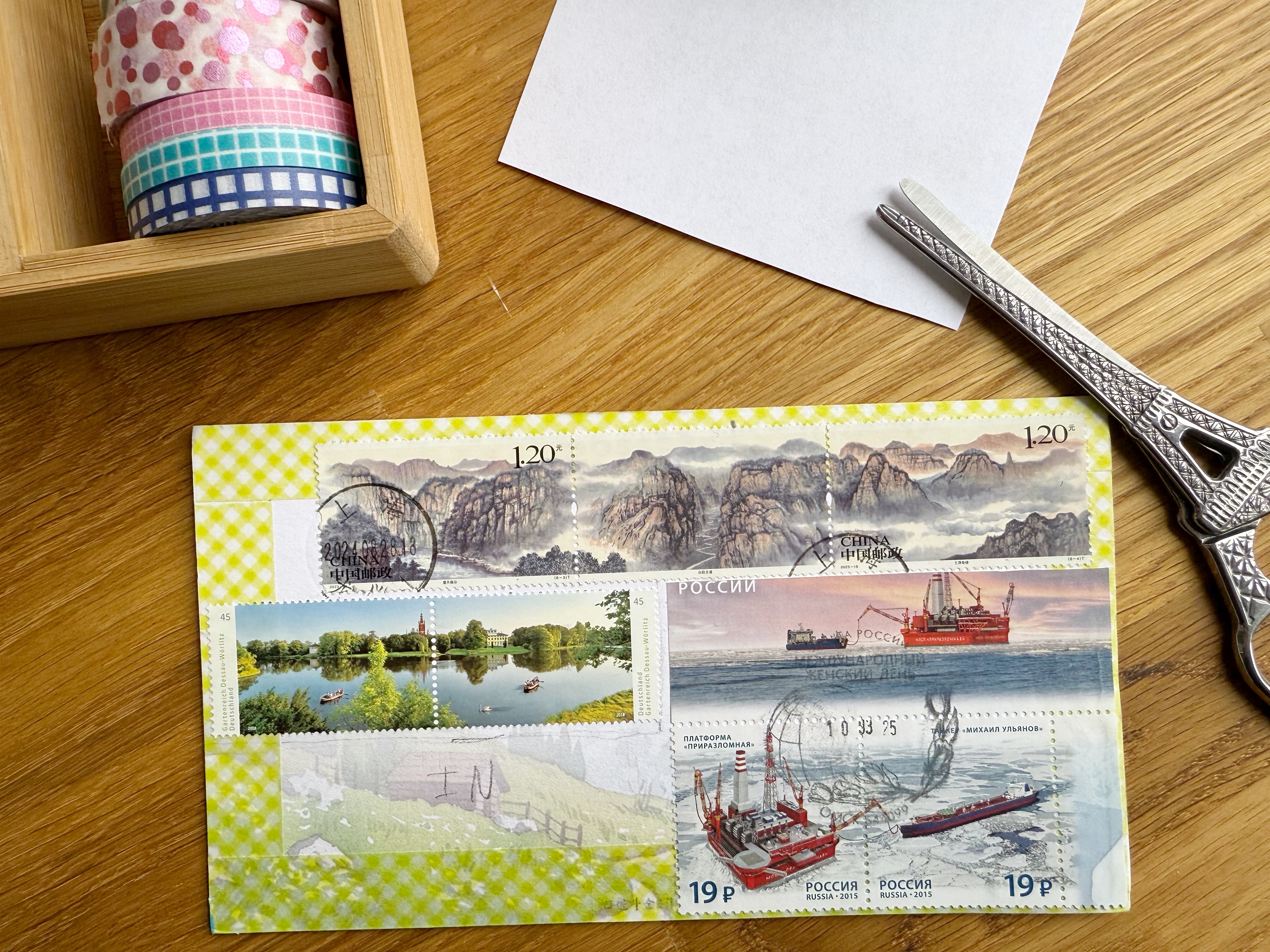
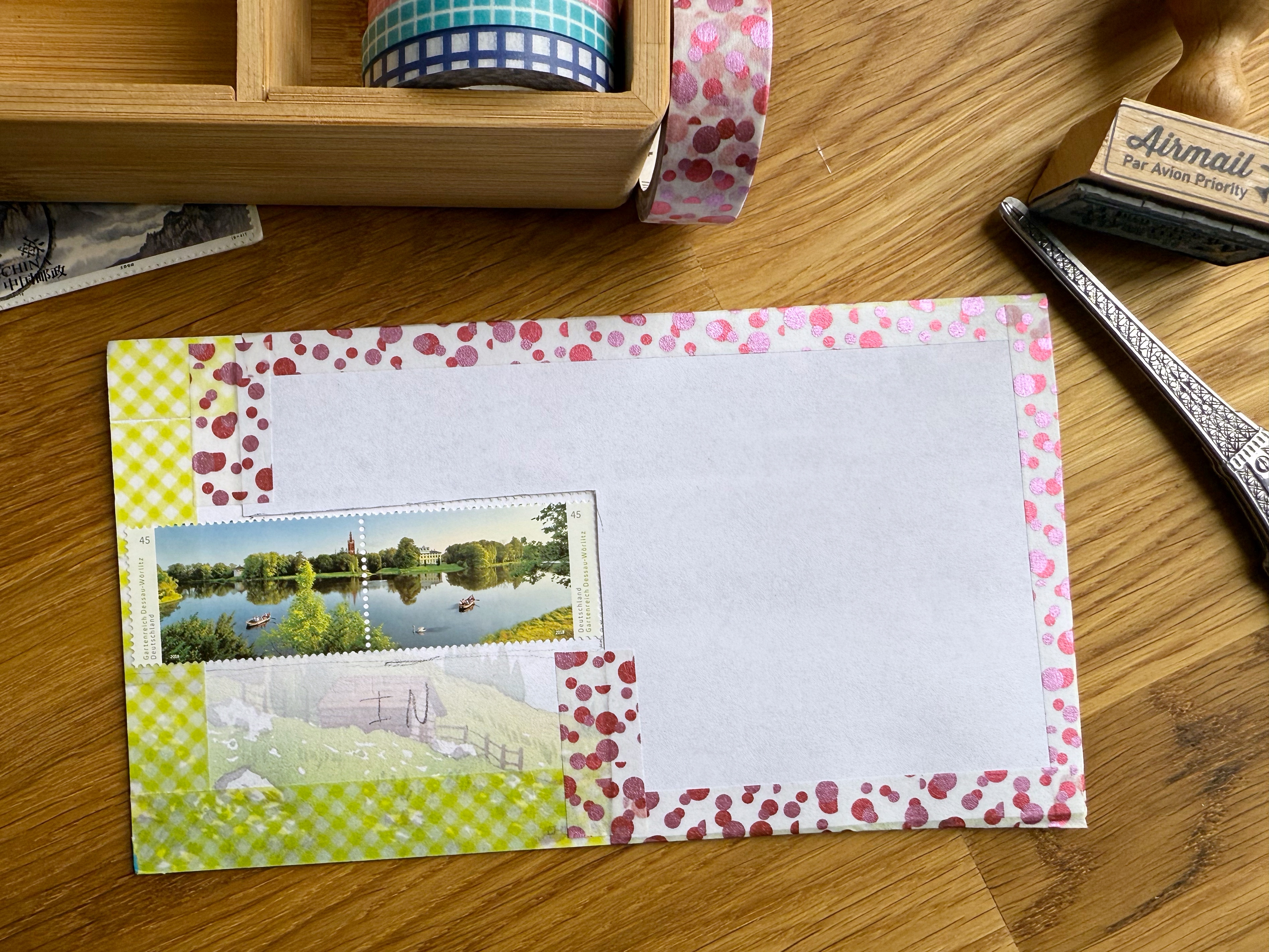
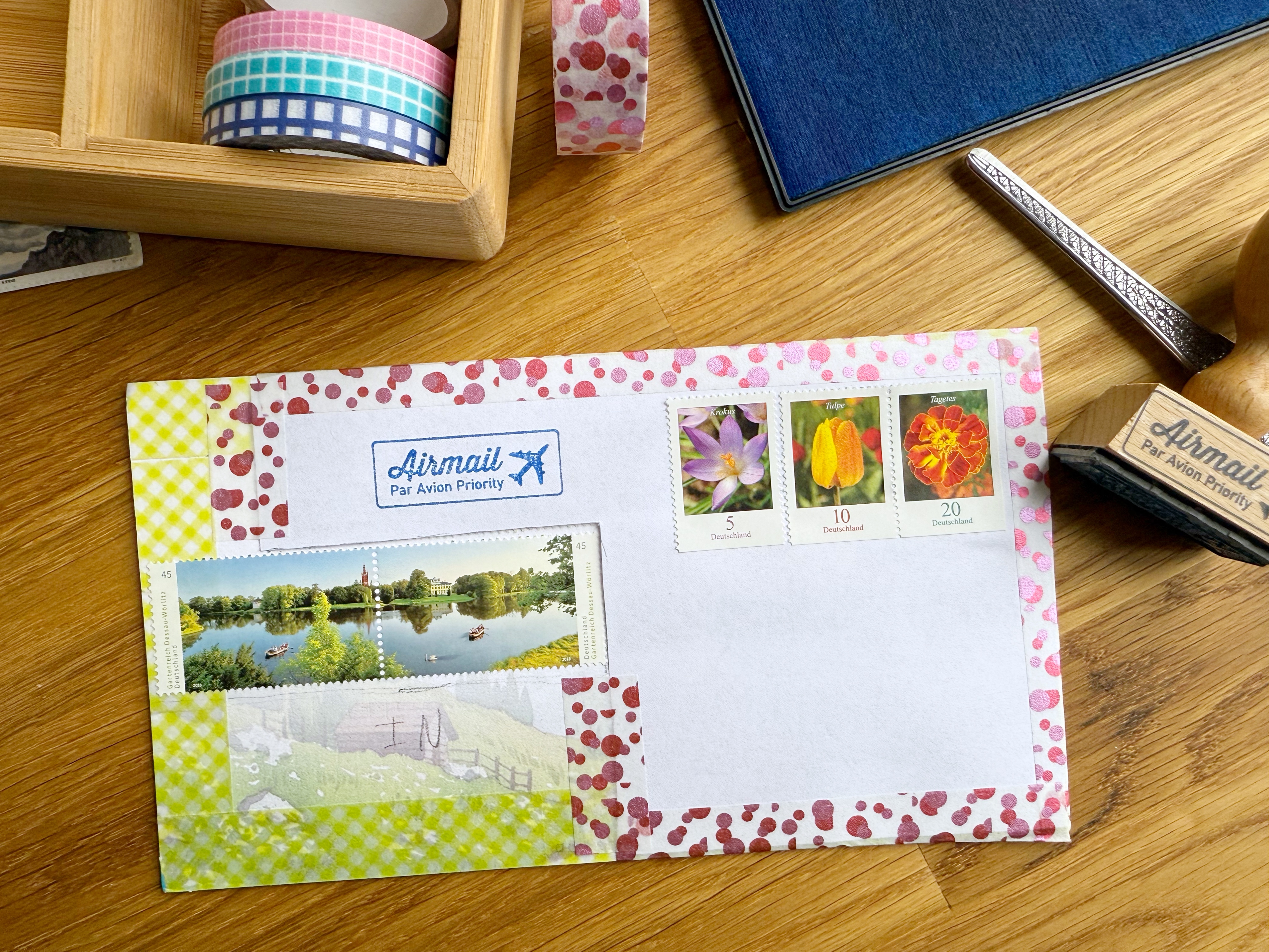
That was too theoretical? We will try to illustrate it with an example. Four people from four different countries make an appointment to send a chaincard about “flowers”. Joe from the USA sends his card with the matching stamps to the next participant, Nancy in Taiwan. He doesn't write Nancy's address directly on the card, but on a piece of paper and attaches it with washi tape. Nancy can then remove the address label. She covers Joe's stamped US stamps with paper and tape, affixes her Taiwanese stamps and sends the card to the next participant in the chain, Alex in Estonia. Here too - as in the whole chain - the address is only attached with paper and tape. Alex removes it again, tapes off Joe and Nancy's stamps, adds the Estonian flower stamps and sends the card to Sandra in Germany. She also removes all the stamps already affixed, adds her own stamps and sends the card back to Joe. This completes the circle - the chaincard has finished its journey and returns home. Joe is delighted with the result - his own postcard with flower stamps from 4 countries! Of course, not only Joe sends a card on its way, but also Nancy, Alex and Sandra. Everyone always sends to the same person - Joe sends a total of 4 cards to Nancy, who in turn sends all the cards to Alex, and Alex sends a card to Sandra in Germany four times. Four postcards from 4 participants - that's the “chain” here.
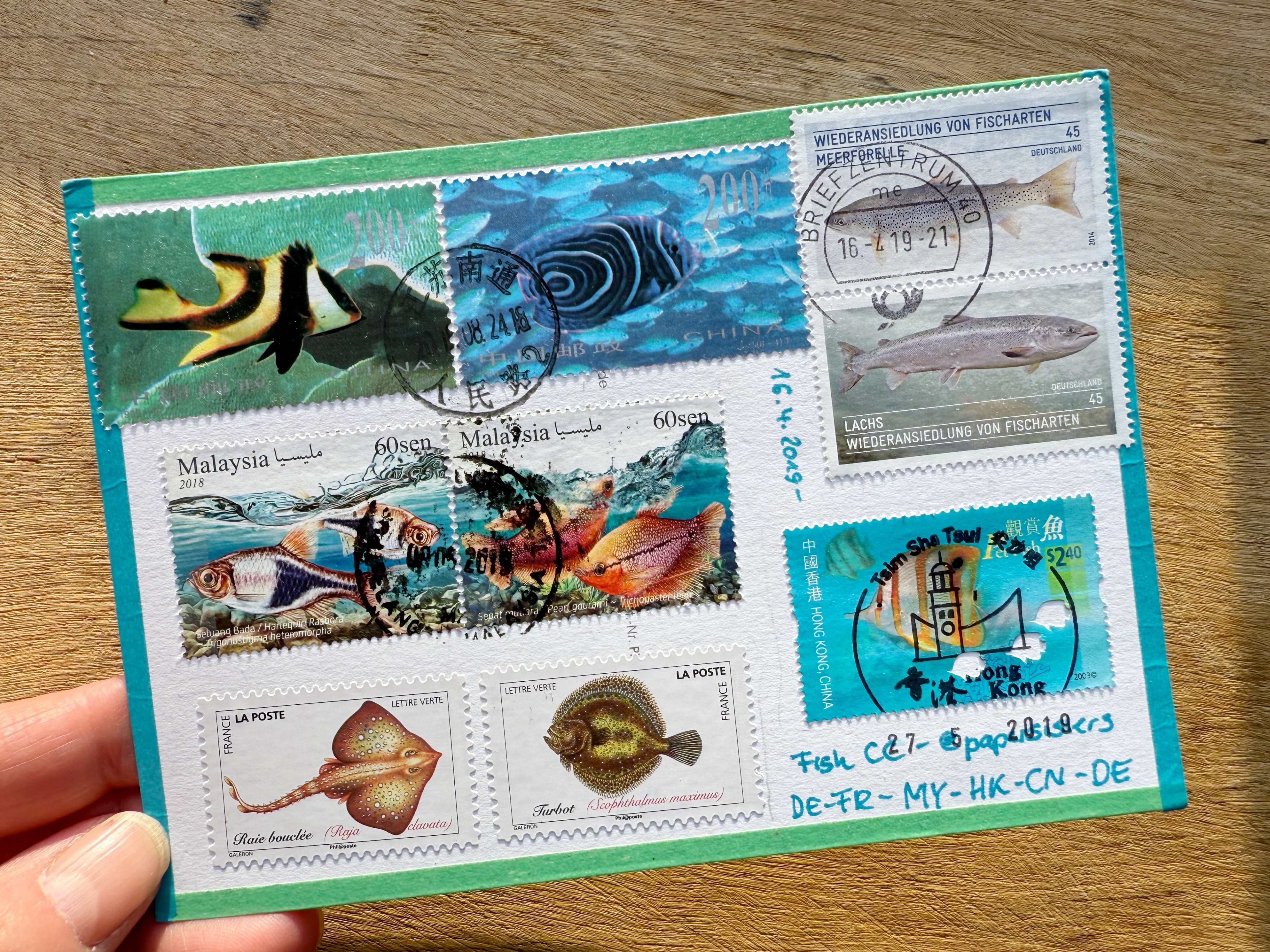
Chaincards can of course be played with even more participants than 4. 6 participants is a popular number. There are also chain cards with 10 participants, but then the space on the card must be well organized and the stamp must not be too large. It can also be agreed in a group that, for example, 2 stamps on one theme are used per participant. Often only one participant per country is allowed in order to achieve the greatest possible variety of stamps.
As a rule, a Chaincard has a theme, so stamps on a specific theme are required for participation. There is an infinite variety of themes! Certain animal species, flowers (as in our example), certain colours, mountains, seasons, dishes, fruits, EUROPA stamps, space - there are no limits.
Some hints – what does it need to participate successfully in a Chaincard?
1. The right group
We can think of two places where you can join a Chain Card group - via Instagram and via the Postcrossing forum. I'm sure there are other options that we don't know about. It may also be that people who already know each other arrange to meet up for a chain card.
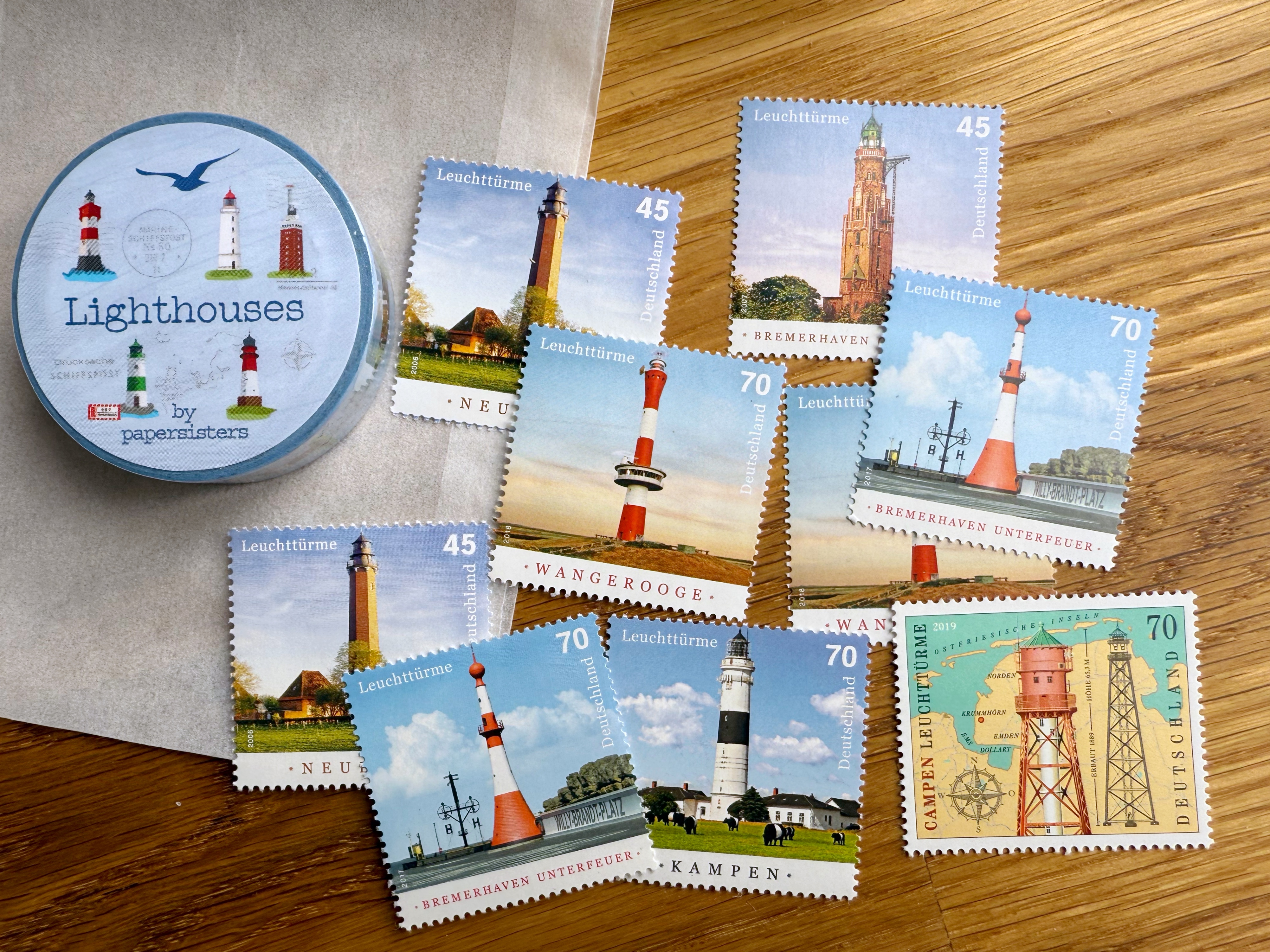
2. Stamps matching the theme
For example, you will need at least 4 dog stamps for a dog chain card with 4 participants. Maybe one more in reserve in case a card gets lost. Some chaincards are simply not possible because of missing stamps! We would love to take part in a Moomin Chaincard or a “Year of the Snake” - but we don't have the right stamps in Germany. From time to time there are also chaincards without a fixed theme that allow any stamp.
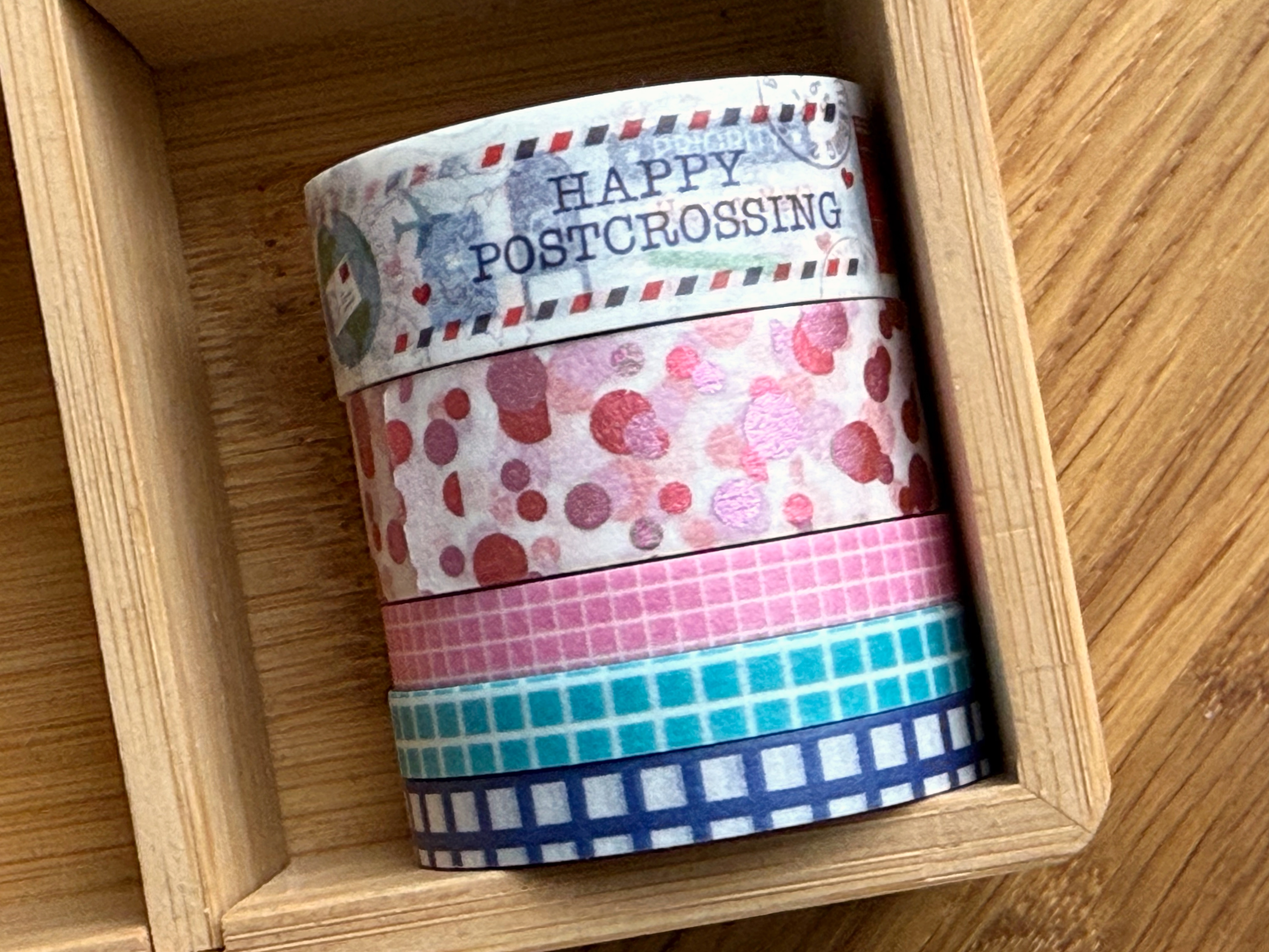
3. a postcard, paper, scissors and good tape
It's up to you which postcard you use. It is nice if it matches the theme. The dimensions should be such that they fit all participants - some countries have exact specifications. Use paper and scissors to cut out the covers of the stamps you have already used and stick the paper down with washi tape. The tape should be of good quality - sticky enough to survive the journey, but not destroy the card and stamps
4. patience, reliability and tolerance
Yes, it is important to approach a chaincard with the right attitude. Depending on the itinerary and the number of participants, a Chaincard can be on the road for a very long time. The participants usually report the receipt and forwarding of a card, and of course you should do the same and also send on the postcards as quickly as possible. Travel times of one year are not uncommon! It can also happen that a postcard gets lost. This is sad but should not be a reason not to try the experiment. The excitement of whether the card will come back home and what it will look like is simply part of the whole experience. We always imagine what “our” card will see and experience on its journey. When such a card comes back after completing the chain, it's like a gift and you hold a truly unique piece of postal magic in your hands. Snail mail for true connoisseurs!
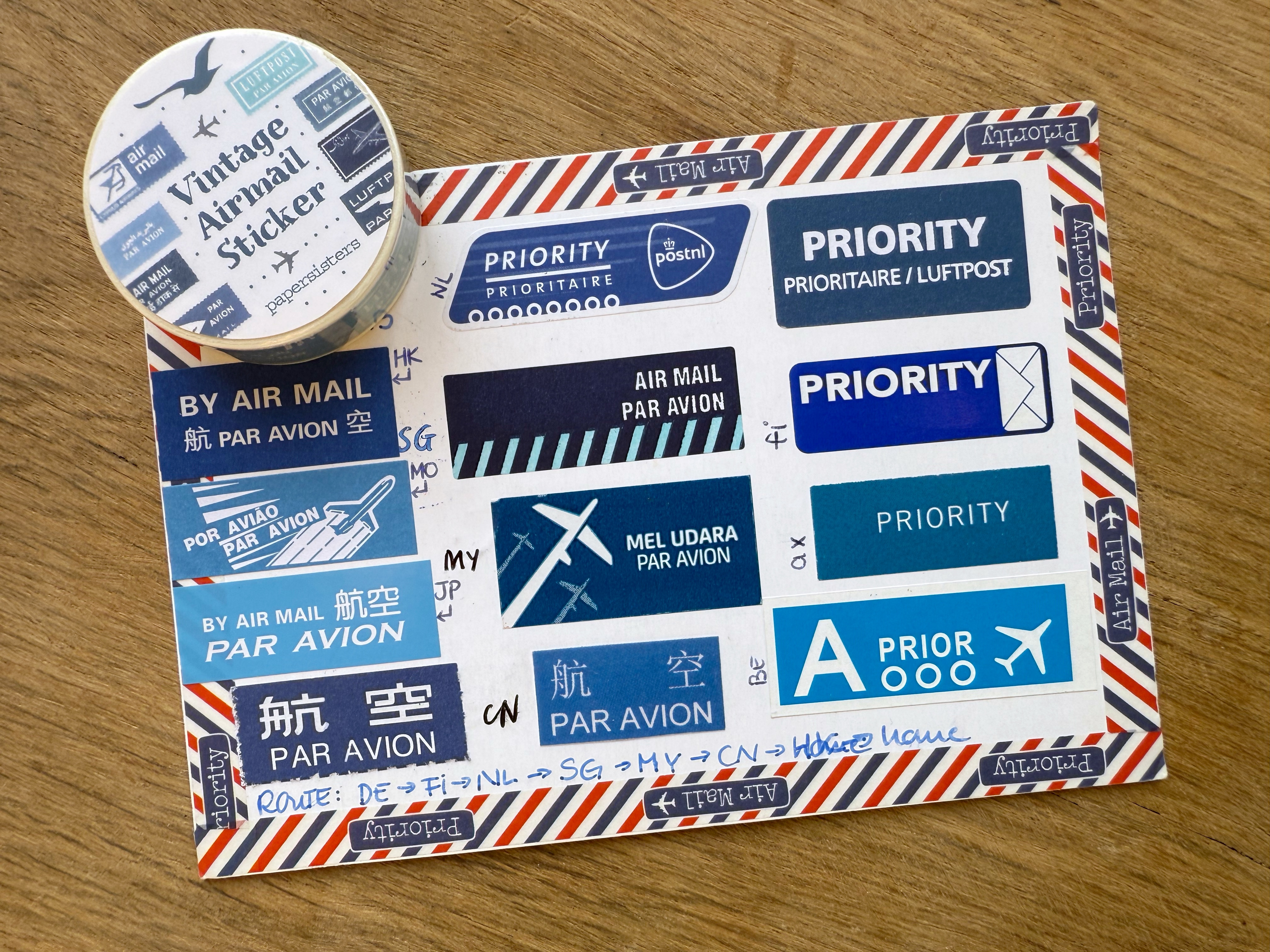
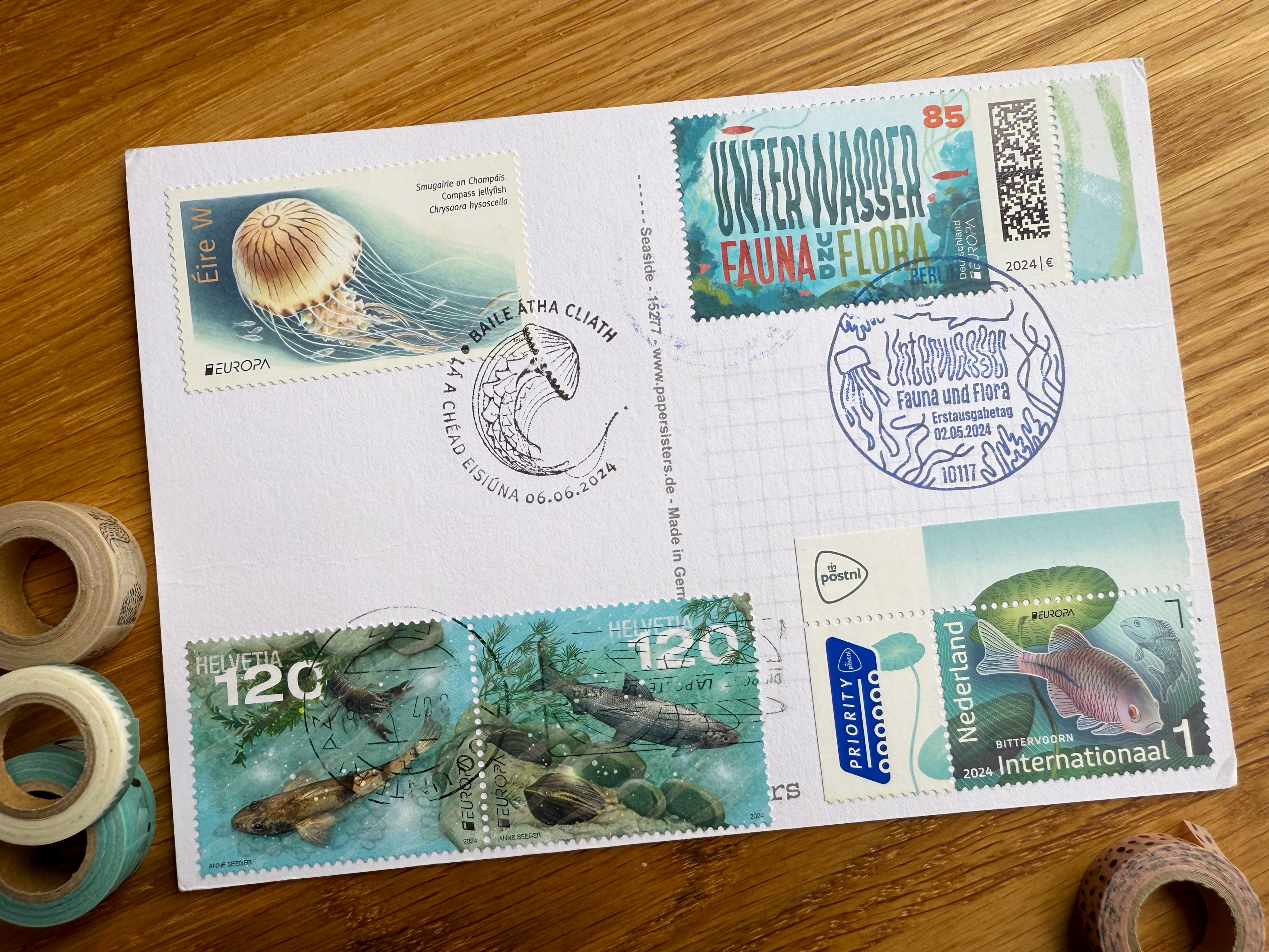
The basic idea of a chain card can always be developed further. How about a Chain Card with just yourself? Send yourself a postcard from your vacation and then the same card with stamps from your respective vacation country from your next vacation. Or find people from different federal states for a Germany Chaincard. We have already seen Chaincards with special postmarks only - fantastic! And once we were able to take part in a Chaincard that was specifically about Airmail stickers. We are sure there are many more variations that we don't even know about - feel free to write us a comment under this blog post.
And now - have fun with Chaincards!




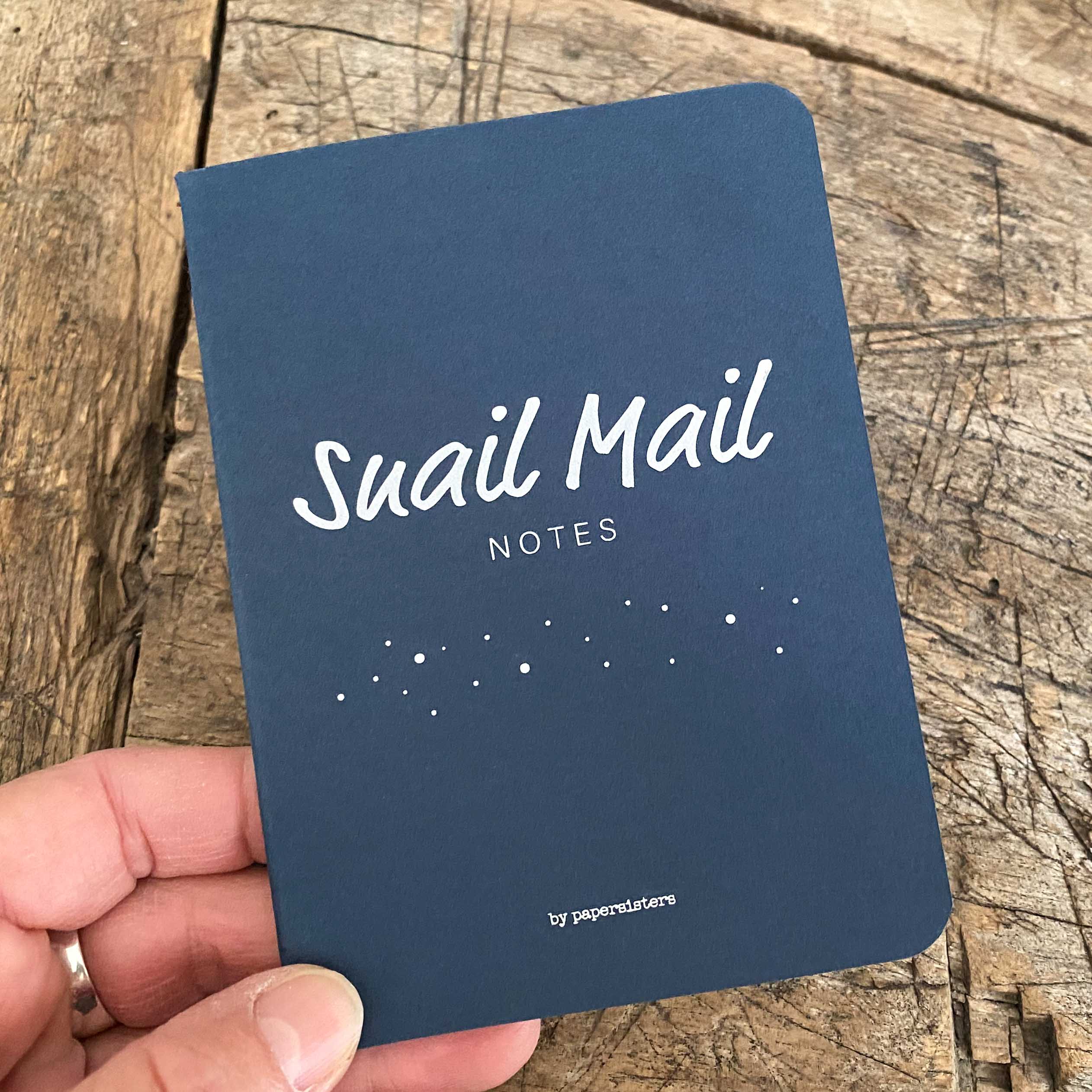
Comments (0)